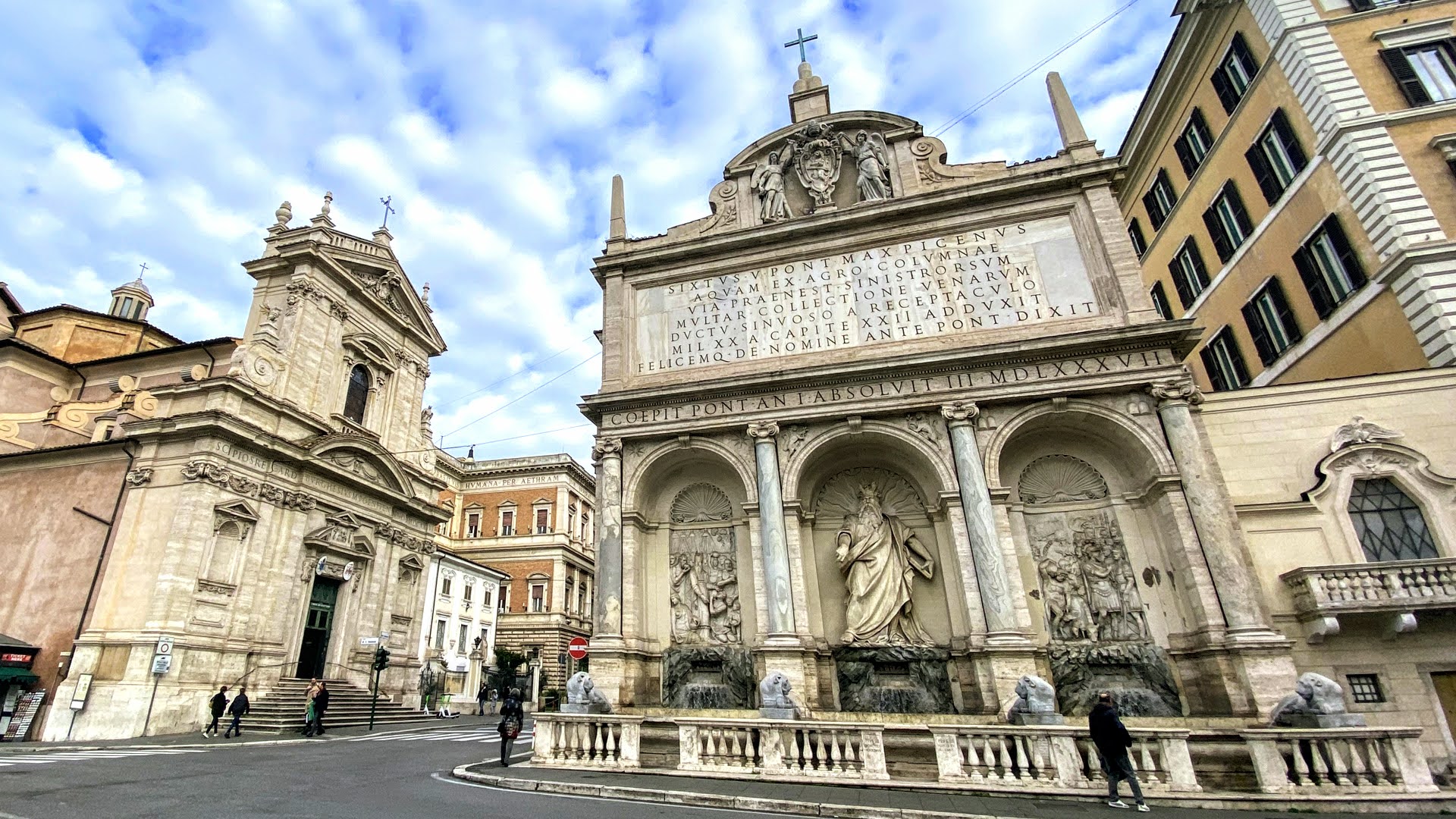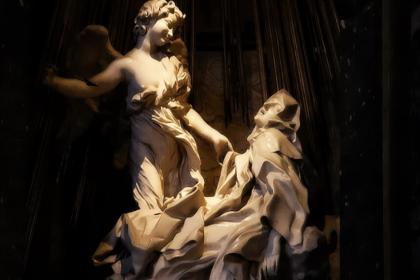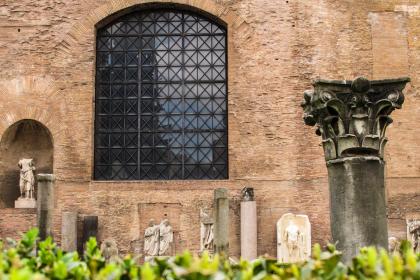
In Piazza San Bernardo, in the Rione Castro Pretorio, is this monumental fountain built between 1585 and 1589, based on a design by Domenico Fontana, favourite architect of Sixtus V and author of many of the building projects with which the 'tough pope' renewed the face of the city at the end of the 16th century.
The fountain constitutes the terminal section of the Acquedotto Felice which, partly reusing the ancient Aqua Alexandrina, served to supply water to the Quirinal, Viminal and Esquiline hills, where the magnificent Villa Montalto, owned by the pope himself, Felice Peretti, also stood.
Inside the niche of the central arch is the imposing statue of Moses, a work by Prospero Antichi completed by Leonardo Sormani. In the side niches are bas-reliefs of biblical subjects, made by Flaminio Vacca and Pietro Paolo Olivieri - on the right, and by Giovanni Battista della Porta - on the left.
From a fake cipollino marble cliff, placed at the base of the niches, water gushes into the basins decorated by four lions in bardiglio marble made in 1850 by Adamo Tadolini to replace the ancient originals in porphyry and marble, which came from the Pantheon and the Lateran and are now in the Vatican Museums.
A huge attic houses the work's long commemorative inscription in Latin, which reads 'SISTVS V PONT. MAX. PICENVS AQVAM EX AGRO COLVMNAE VIA PRAENEST. SINISTRORSVM MVLTAR. COLLECTIONE VENARVM DVCTV SINVOSO A RECEPTACVLO MIL. XX A CAPITE XXII ADDVXIT FELICEMQ. DE NOMINE ANTE PONT. DIXIT' (Pope Sixtus V Piceno, from the Colonna countryside on the left of the Via Prenestina, collected water from many springs from the twentieth to the twenty-second mile, through a sinuous conduit and named it Felix after the name he had before becoming pontiff) and is surmounted by the papal coat of arms supported by two angels and flanked by two small obelisks. The second inscription, also in Latin, under the cornice of the attic reads 'COEPIT PONT. AN. I ABSOLVIT III MDLXXXVII" ((the work) began in the 1st and ended in the 3rd year of the pontificate 1587).
At the base, a travertine balustrade, made at the time of Pius IV for the Belvedere courtyard in the Vatican, surrounds the work in travertine, marble and stucco, which recalls the form of a triumphal arch with three large niches, framed by four columns of coloured marble.
The statue of Moses that rises in the centre of the fountain was the protagonist of a curious controversy: made, as we have seen, by Prospero Antichi and Leonardo Sormani, and inspired by the much more famous one by Michelangelo, visible today in the basilica of San Pietro in Vincoli, it was harshly criticised above all for a historical inaccuracy: Moses shows the water that prodigiously gushes out of the marble and holds in his hands the Tablets of the Law, which, however, at the time of the miracle he had not yet received from God. He thus became the object of the famous irony of the Romans, who nicknamed him the 'Ridiculous Moses', and of shrewd pasquinades such as:
"Guardo con occhio torvo/l'acqua che sgorga ai pié/pensando inorridito/al danno che a lui fe'/uno scultor stordito" and "È buona l'acqua fresca e la fontana è bella/Con quel mostro di sopra però non è più quella/O tu, Sisto, che tanto tieni alla tua parola/Il nuovo Michelangelo impicca per la gola". "I look with a grim eye/at the water gushing out at his feet/thinking horrified/at the damage done to him/one stunned sculptor". "Fresh water is good and the fountain is beautiful/With that monster above, however, it is no longer that/You, Sixtus, who hold so dear your word/The new Michelangelo hang by the throat".
The statue was in fact also known as 'Ugly Moses' because of its stocky and ungainly features, when compared to the perfect ones of Michelangelo's masterpiece.
Photo: Redazione Turismo Roma
The Church of Santa Maria della Vittoria

 Condividi
Condividi
Museo Nazionale Romano – Diocletian's Baths

 Condividi
Condividi
The Church of San Bernardo alle Terme

 Condividi
Condividi
Information
 Condividi
Condividi
Location
To find out about all accessibility services, visit the Rome accessible section.











































